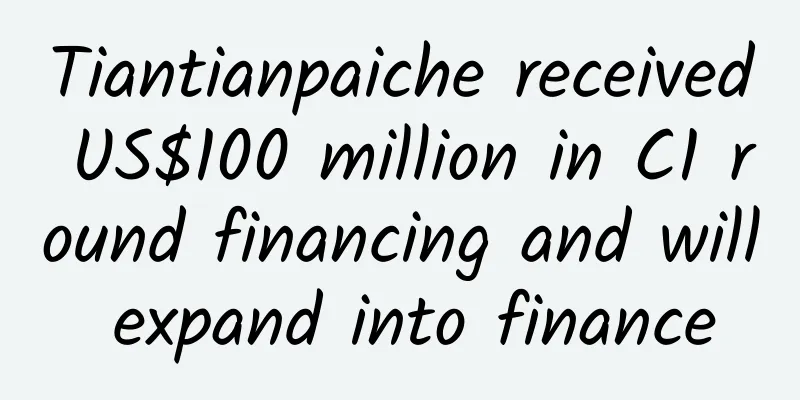Internet TV is constrained by panels and the low-price strategy is no longer effective

|
LeTV TV, which has always been a disruptor with its "low prices" , recently announced price increases for some of its models, which caused an uproar in the industry. Some people mocked that LeTV TV 's low-price strategy could no longer be sustained, while others speculated that it was related to LeTV's capital chain crisis. But a closer look shows that LeTV is going to achieve its goal of selling 6 million units this year and breaking through the 10 million units stock target. For LeTV, which is in urgent need of increasing sales, it is obviously not a wise move to announce a price increase during the upcoming golden sales period of color TVs during the New Year's Day and Spring Festival. However, why did LeTV do the opposite? In fact, after LeTV announced the price increase, the prices of various brands of color TVs have been "secretly increased" one after another. According to data from Aowei Consulting, in November, 40-inch , 50-inch , 55-inch and 60-inch TVs all had different price increases, and the price of Internet TVs was basically adjusted by two to three hundred yuan. The fact is that 70% of the cost of color TV hardware comes from the panel. Once the panel price fluctuates, it will directly affect the price of the whole machine. "If the panel price continues to rise or is in short supply, the color TV will definitely lose more and more money if it keeps the original price." A panel manufacturer said. If color TV companies want to maintain the profit and loss balance of TV sets, there is only one possibility, that is, the "model of making money from content instead of hardware" that the industry expects has matured. It can be seen that this time the price of Internet TV has risen along with the increase in panel prices. Both traditional TV brands and Internet newcomers still make money by selling hardware. The right to speak on TV hardware still lies with panel companies The rise in panel prices depends on the production capacity of panel manufacturers. In the third quarter of this year, the price of 32-inch panels rose sharply to more than US$70, and 40-inch panels to more than US$130. Whole machine manufacturers began to adjust their strategies, avoiding small and medium-sized panels that were in losses, and shifting demand to large sizes such as 49, 50, 55, and 65. This move has exacerbated production capacity constraints, because large sizes consume much more production capacity area than small and medium sizes. The shortage is like a tight spell hanging over the heads of whole machine manufacturers, and they are in a dilemma. Li Yaqin, general manager of Qunzhi Consulting, said that the global color TV industry has fallen into a "prisoner's dilemma." Although Wang Chuan, head of Xiaomi TV , has previously made it clear that Xiaomi TV will not increase in price, he also admitted that there will be price differences when whole-machine companies purchase panels from upstream suppliers, and there are many factors involved. Coincidentally, after LeTV announced the price increase of some TV models, Hisense and TCL, once competitors, announced the news of cooperation between the two parties. Hisense said it would use TV panels from TCL's Huaxing Optoelectronics. A senior person believes that Hisense TV's upstream supply chain added Huaxing Optoelectronics to prevent future panel price fluctuations and the risk of periodic shortages. The stability of the relationship with the panel factory determines whether the color TV enterprise can get the most advanced panels and a stable supply. Skyworth is the first company in China to launch OLED TVs , which is closely related to the tie-up with Skyworth's supplier LGD. In 2012, Skyworth and LGD, the world's largest TV panel factory, established a joint venture in China, which is mainly used to build the panel factory of the Guangzhou 8.5-generation line. According to data, the Guangzhou 8.5-generation line project with a total investment of US$4 billion was invested and built by LGD, Guangzhou Development Zone (Guangzhou Kaide Technology Development Co., Ltd.) and Skyworth at an investment ratio of 7:2:1. This production line mainly produces large and medium-sized ultra-high-definition and full-high-definition LCD panels such as 55 inches, 49 inches and 42 inches . The maximum production capacity was 120,000 pieces per month at the end of 2016. It can be seen that with the support of LGD, Skyworth TVs have a supply chain guarantee. In recent years, with the withdrawal of Japanese companies Sony and Panasonic, and the gradual shrinking of the business line of Taiwanese company AU Optronics, the concentration of TV panel brands has become increasingly higher, gradually being controlled by South Korea's LGD, Samsung, as well as China Star Optoelectronics and BOE. It is reported that after Foxconn acquired Sharp, the two companies planned to invest US$7 billion to build an LCD panel factory in mainland China, and it is expected to produce large-size TV panels in 2019. Although the mass production of panels in cooperation between Foxconn and Sharp will take another two years, many color TV companies have already negotiated with them on the quantity of panel purchases. TV sets may see inventory backlog in the first quarter of next year From the perspective of TV gross profit, the gross profit of 40-43 inch TV is currently at the lowest level, less than 20%, while the gross profit of 49-55 inch TV is between 25% and 30%. Therefore, TV companies should make market predictions based on the fluctuation of panel prices at any time and adjust their product structure. Any negligence will directly affect the profits of color TV companies. As Li Yaqin said, the global color TV industry is caught in a "prisoner's dilemma" in the uncontrollable upstream link of panels. A scary phenomenon is that although panel prices continued to rise in the third quarter of 2016, in the fourth quarter, TV companies had to stock up and purchase large quantities of panels despite price increases in order to secure supply, complete 2016 sales plan targets, and actively grab market share for Internet TV brands. A severe situation is that the increase in TV sets is slowing down. The performance of the TV market demand in China is closely related to the real estate market. At present, the Chinese government has tightened its policies on the real estate market, and the price increase of terminal products has directly affected the market demand for TV sets. "Compared with the active stocking/sprint BP targets of brand manufacturers, we find that the gap between planned demand and actual demand will be inevitable. It is expected that the market may reappear high inventory risks in early 2017." Li Yaqin expressed her concerns. "Once high inventory appears, price wars are inevitable." A color TV industry insider believes that the first quarter financial reports of TV companies next year will definitely not look good. From price competition to a race against time In 2016, the color TV market structure has gradually shifted from the original Chinese color TV brands VS Japan and South Korea to Chinese traditional TV brands VS new Internet TV brands. According to AVC forecast data, the retail volume of smart TVs will reach 41.87 million in 2016. Judging from the market targets of new Internet TV companies in 2016, LeTV aims to sell 6 million TVs, Fengxing aims to sell 3 million TVs, Baofeng TV and Kanshang TV aim to sell 1 million TVs, and PPTV aims to sell 1 million TVs. In addition, Xiaomi's sales volume has not been announced, so new Internet TV brands have already occupied 20% of the Chinese market. In 2017, as the growth of China's TV market remains flat, Internet TV brands are still trying to seize the market share of traditional TV brands. Industry insiders analyzed that, except for LeTV TV, which has surpassed 10 million units in the past two or three years by exchanging profits for market share, it is difficult for other brands to continue using this low-price strategy in 2017. Looking at the major Internet TV brands, Baofeng TV is backed by Baofeng Group; Fengxing TV’s largest shareholder is Zhaochi Holdings; Kanshang TV is backed by China Media Group and Guangdong TV. These major shareholders will not continue to spend money to make their TV businesses continue to lose money. For example, Baofeng TV has affected the performance of its parent company Baofeng Group. The third quarter financial report of 2016 released by Baofeng Group showed that its net profit fell by 97.16%, which was caused by the sharp rise in the prices of raw materials such as TV panels and large marketing expenses. Industry insiders believe that there are still uncertainties as to whether Baofeng Group can continue to invest in TV projects to gain market share. Xiaomi's Wang Chuan said that Xiaomi TV will not set sales volume as its goal. For Xiaomi, TV is a race against time. Someone will eventually fall in this competition, and whoever can persevere to the end will be the winner. Liang Jun, president of LeEco Zhixin, believes that "the value of large screens does not only lie in how much hardware is sold, but also in how many users are connected through these hardware and what value can continue to be provided to these users in the future." It can be seen that in the future of color TVs, whoever can finally usher in the era of "profiting from content" will be the king. LeTV, WeTV with a Chinese cultural background, and Xiaomi, which has invested US$1 billion in content, are all waiting for that day. Starting next year, price will no longer be a selling point for corporate promotions, and all of them will turn to operations for TV users. As a winner of Toutiao's Qingyun Plan and Baijiahao's Bai+ Plan, the 2019 Baidu Digital Author of the Year, the Baijiahao's Most Popular Author in the Technology Field, the 2019 Sogou Technology and Culture Author, and the 2021 Baijiahao Quarterly Influential Creator, he has won many awards, including the 2013 Sohu Best Industry Media Person, the 2015 China New Media Entrepreneurship Competition Beijing Third Place, the 2015 Guangmang Experience Award, the 2015 China New Media Entrepreneurship Competition Finals Third Place, and the 2018 Baidu Dynamic Annual Powerful Celebrity. |
<<: Renault, Nissan and Mitsubishi to share electric vehicle technology
>>: Hackers are Time Magazine's 2016 Person of the Year: Why
Recommend
Bilibili (Bilibili) Product Analysis
Bilibili was originally a two-dimensional website...
Dyeing the lake pink! It’s for science…丨Environmental Trumpet
Hello everyone, this is the 18th issue of the Env...
WeChat and Alipay payment codes are restricted because of this group of people who launder money too aggressively
[[437025]] Early this morning, the message board ...
How to explore user needs? Follow these 5 steps!
We are always asked to explore user needs. How do...
ROM Features Comparison
In addition to the rich applications that smartpho...
Zhihu video income project, simple operation to earn 10000+ per month
I believe many people have heard that Zhihu could...
Analyze community operation strategies from 4 aspects!
How can we trigger community group buying? In thi...
How to run an awesome Pinterest campaign?
Organizing activities on Pinterest is an importan...
It's time to compare iPhone 5S and Nexus 5
Every once in a while, I see iOS and Android bein...
Jiashan No. 1 Middle School: Why are websites ranked on the homepage recognized by search engines?
Website operations should be optimized according ...
China Association of Automobile Manufacturers: Brief analysis of automobile industry production and sales in June 2024
According to an analysis by the China Association...
Analysis report on PROYA and FASHION’s Tik Tok live streaming
2021 is considered to be the first year of brand ...
Contact for 10 seconds can cause infection, and severe cases can cause liver damage! The recent high incidence of the virus has caused the China Centers for Disease Control to issue a series of warnings →
As spring arrives and the temperature rises, are ...
How does Haidilao improve its user retention rate?
The 2019 performance report of catering industry ...
Another fitness move is going viral! A man's hemorrhoids ruptured after trying it! Doctor: Not suitable for everyone...
In the movie, Ip Man is a master of martial arts,...









